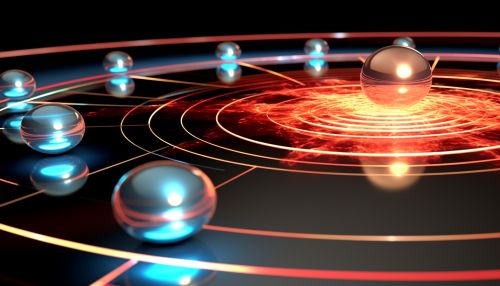Quantum Hall Effect
Introduction
The Quantum Hall Effect (QHE) is a quantum-mechanical version of the classical Hall effect. The classical Hall effect was first discovered by Edwin H. Hall in 1879, but it wasn't until a century later in 1980 that the quantum version of this phenomenon was discovered by Klaus von Klitzing. The QHE is observed in two-dimensional electron systems subjected to low temperatures and strong magnetic fields, where the Hall conductance undergoes quantum Hall transitions to take on the quantized values.


Quantum Hall Effect Phenomenon
The Quantum Hall Effect is a quantum mechanical phenomenon that occurs in two-dimensional electron systems, particularly at very low temperatures and under strong magnetic fields. The effect is characterized by the quantization of the Hall conductance, which means that the Hall conductance, measured in units of the von Klitzing constant, changes in integer or fractional steps as the magnetic field or electron density is varied.
Theoretical Background
The theoretical understanding of the Quantum Hall Effect involves advanced concepts in quantum mechanics, condensed matter physics, and field theory. The integer QHE can be explained using non-interacting electrons and the single-particle Landau level picture, while the fractional QHE involves interacting electrons and requires the understanding of topological order and anyon statistics.


Experimental Observations
The Quantum Hall Effect has been observed in various experimental setups, including semiconductor heterostructures, graphene, and topological insulators. The precise measurement of the Hall resistance has been utilized as a standard of electrical resistance, with the resistance quantum given by the von Klitzing constant.
Applications and Implications
The Quantum Hall Effect has profound implications in fundamental physics and practical applications. It provides a precise determination of the fundamental constant, the fine-structure constant, and has been used to define the standard of electrical resistance. Moreover, the study of the QHE has led to the discovery of new states of matter with topological properties, which have potential applications in quantum computing.


